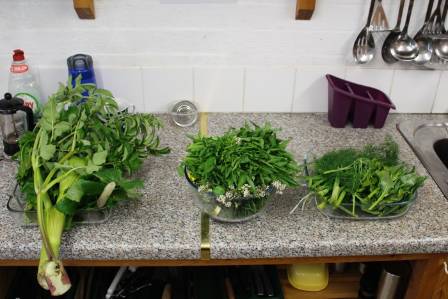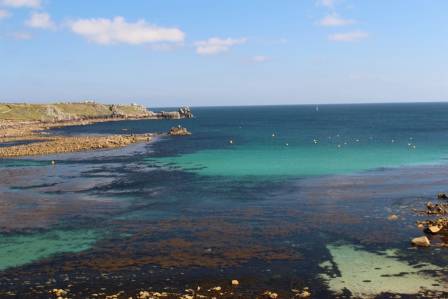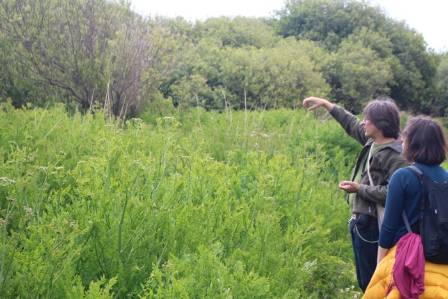We have settled in to island life on the Isles of Scilly. Our digs for the next two weeks are an old bunker in the south western corner of St Mary’s with a wonderful view across to St Agnes. It is quiet and beautiful and we are surround by the spectacular atlantic ocean.
The view out onto the Atlantic Ocean
Our trip is part of a project led by Mark Spencer, Senior Curator of the British and Irish Herbarium at the Natural History Museum. The Isles of Scilly are a unique and stunning environment and they contain common and rare and (in some cases) invasive species - Mark’s work here aims to enrich the Museum's collection of British and European plants and animals with recent material.
This will fill gaps in our collections and make sure they cover a continuous span of time right up to the present day. Often, we don’t know how a collection will be used in future and they can play a key role in research. By keeping a collection like the one at the Museum, we have access to the information locked inside the specimens which could be used to answer questions on environmental change and other, similarly huge issues in the future.
The rest of the science team are arriving later in the week so, as an introduction to the island (and to find something to eat), Mark led us on a foraging tour of St Mary’s.
Mark Spencer looking for plants on St. Mary's to cook for supper
We found a whole host of amazing (and delicious) species, more than enough for supper. It should be said that we found a lot more edible species that we didn’t collect. It is important to understand a plant's role in the ecosystem and environment and some plants were too rare, or delicate to collect. Mark has an excellent knowledge of the local flora and it is important to really understand an area before harvesting anything from the wild as well as having permission for anything you want to collect.
I think it is safe to say if you’re in doubt, leave it in the ground. Not only does this protect the environment but also saves any potential poisoning (so don't try this at home unless you know what you are doing!). We passed lots of species that are absolutely deadly including whole fields of hemlock water dropwort, which is exceptionally poisonous.
The exceptionally poisonous hemlock water dropwort (Oenanthe crocata) - not part of our supper later in the day!
Having said that, when in the company of an expert like Mark, the natural world explodes with interest and intrigue. Every plant has story and history and a whole world of edible possibilities is opened up.
 The basis of our supper, all harvested from the wild.
The basis of our supper, all harvested from the wild.
Later in the day we cooked up our foraged plants - finding things that are good, or interesting, to eat is always great fun and the meal at the end of the day was blooming delicious.





